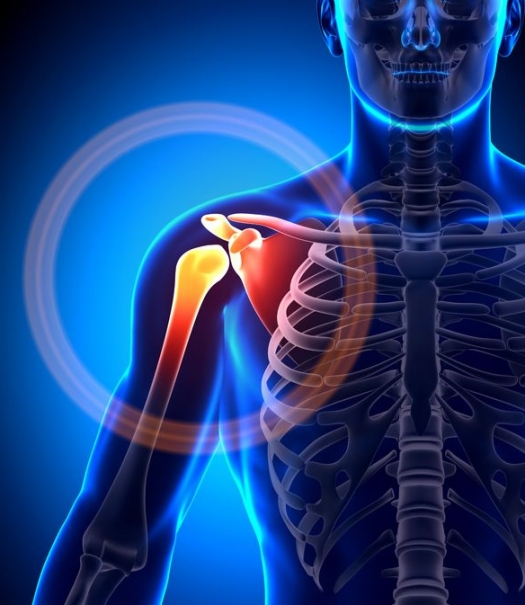My usual suggestions for pain in the hips, knees, shoulders, vertebrae, and other joints include natural anti-inflammatories like fish oil and curcumin, glucosamine to help rebuild cartilage, and topical analgesics, infrared light, laser, microcurrent, acupuncture, and chiropractic for pain relief. Effective as these therapies are, however, sometimes they’re just not enough.
If you consult an orthopedist, you may be told surgery is your only option for unrelenting joint pain. That’s simply not true. A number of minimally invasive regenerative medicine therapies actually repair and restore damaged and degenerated tissues. And Mel Hudman is living, breathing, dancing proof.
Mel’s story
“About two years ago, I began having constant pain in my right hip. I got some relief from a chiropractor, but the pain always returned. He told me there was no cartilage in my hip – it was bone on bone – and there was really not much he could do.
“It was getting worse every week, so I went to a hip specialist in Tyler, Texas. He gave me three options: 1) Do nothing and be in a wheelchair in two years; 2) Take anti-inflammatories, come back in two years, and have a complete hip replacement; 3) Have a hip replacement right then, followed by six months of rehabilitation.
“My father-in-law, Leon Lewis, who subscribes to Health & Healing, suggested I look into the Whitaker Wellness Institute for stem cell therapy. After a few phone calls to the clinic, we decided to try it, and I went to California for the procedure in July 2013.
“Six months later, I can sit, stand, walk, and sleep with absolutely no discomfort. Every once in a while if I take a step wrong, I get a sharp pain in my hip, but it goes away quickly. It’s such a blessing to not be in constant pain. I would definitely recommend stem cell therapy to anyone.”
Major advances in stem cells
Stem cell therapy is the most promising and versatile treatment in medicine today. These unique cells have the ability to differentiate, or change into several cell types and help regenerate and repair diseased or damaged areas of the body. Until a few years ago, stem cells were mired in controversy and limited to research. But new technologies, which make it possible to use patients’ own stem cells, eliminate all ethical and safety concerns and have opened the door to widespread use.
It’s a pretty simple procedure. A few ounces of fat – the richest repository of stem cells in adults – are removed during a quick liposuction procedure. The fat is separated out, leaving millions of concentrated, viable stem cells that are then returned to the body. For respiratory, autoimmune, neurological, and other conditions, we infuse the cells intravenously, as they naturally migrate to areas of injury and degeneration. For joint pain, however, we also inject them into the problem area.
The entire process, which is done in a doctor’s office under local anesthesia and light sedation, takes no more than an hour. There’s no downtime, and the only discomfort, if any, is at the injection site. Mel’s results speak volumes, and we’ve also seen great outcomes with degenerated knees, neck and back pain, and a host of other conditions affecting organs throughout the body.
PRP revs up repair
You may have heard about Kobe Bryant, Tiger Woods, Peyton Manning, and Rafael Nadal using platelet-rich plasma (PRP) therapy to avoid surgery or speed recovery. Elite athletes may have put PRP on the map, but it’s a beneficial therapy for anyone with joint pain caused by injury, overuse, or arthritis.
James came to us for PRP because he had torn the ligaments in his ankle during a wrestling match. Two weeks after his treatment, he was able to jog and resume his workouts. Christine, who suffered with debilitating neck and back pain for years, had been treated with everything from adjustments and massage to surgery and cortisol injections. Nothing helped – until PRP. Within five weeks, the pain was “almost gone,” she was sleeping well, and her energy and vitality had returned.
Platelets are fragments in the blood that are activated by injury and bleeding. They stick to the lining of damaged blood vessels, initiate clot formation, and release growth factors that start the healing cascade. PRP therapy involves removing a small amount of a patient’s blood, isolating the platelets and plasma, and injecting them directly into the area of injury or degeneration – and unleashing the power of platelets to promote the formation of new tendon, ligament, cartilage, muscle, and bone tissue.
Prolotherapy stabilizes joints
The final regenerative medicine therapy I want to discuss is prolotherapy, which we’ve been using at Whitaker Wellness for decades. Prolotherapy addresses a significant underlying cause of neck, back, hip, and knee pain: laxity, or looseness, of the ligaments and tendons that hold the joints in place. This results in misalignment that strains the muscles, wears down cartilage, and impinges on nerves.
During a prolotherapy treatment, a dextrose solution is injected into the affected ligaments and tendons. Dextrose acts as an irritant that initiates repair mechanisms. Over time, the connective tissue grows stronger and tauter, restoring proper alignment and pain free function.
Hundreds of our patients swear by prolotherapy, and although some require repeat injections, many experience lasting, even permanent relief after just one treatment.
We’ve had the most experience with neck and back problems, but it’s a proven therapy for all kinds of musculoskeletal pain.
Politics of medicine
The only downside of these regenerative medicine therapies is out-of-pocket costs. Medicare has no problem shelling out a minimum of $15,000 for a knee replacement, and insurance companies pay at least twice that much for hip replacements. But few insurers, including Medicare, cover stem cell therapy, PRP, and prolotherapy, which cost a fraction of the price of surgery – and are infinitely safer and less traumatic.
One of these years, that will change. Regenerative medicine, defined by the National Institutes of Health as “the process of creating living, functional tissues to repair or replace tissue or organ function lost due to age, disease, damage, or congenital defects,” is the future of health care. Stem cell therapy, PRP, and prolotherapy are perfect examples of regenerative treatments. At Whitaker Wellness, the future is now.
To learn more, visit Dr. Whitaker's website.
References
Hsu WK, et al. Platelet-rich plasma in orthopaedic applications: evidence-based recommendations for treatment. J Am Acad Orthop Surg. 2013 Dec;21(12):739–748.
Orozco L, et al. Treatment of knee osteoarthritis with autologous mesenchymal stem cells: a pilot study. Transplantation. 2013 Jun 27;95(12):1535–1541.
Rabago D, et al. Dextrose prolotherapy for knee osteoarthritis: a randomized controlled trial. Ann Fam Med. 2013 May–Jun;11(3):229–237.
Originally published in Health & Healing, February 2014, Vol. 24, No. 2. Used with permission.



